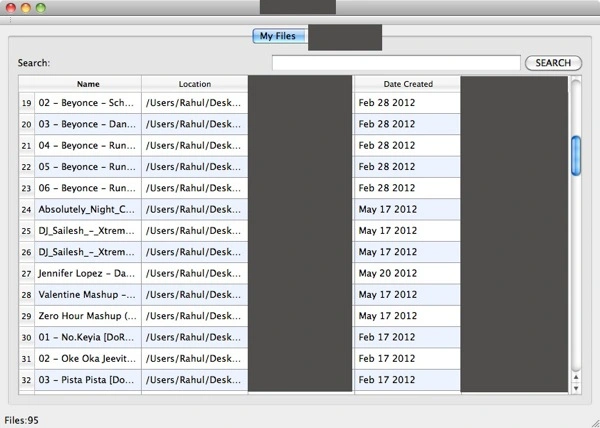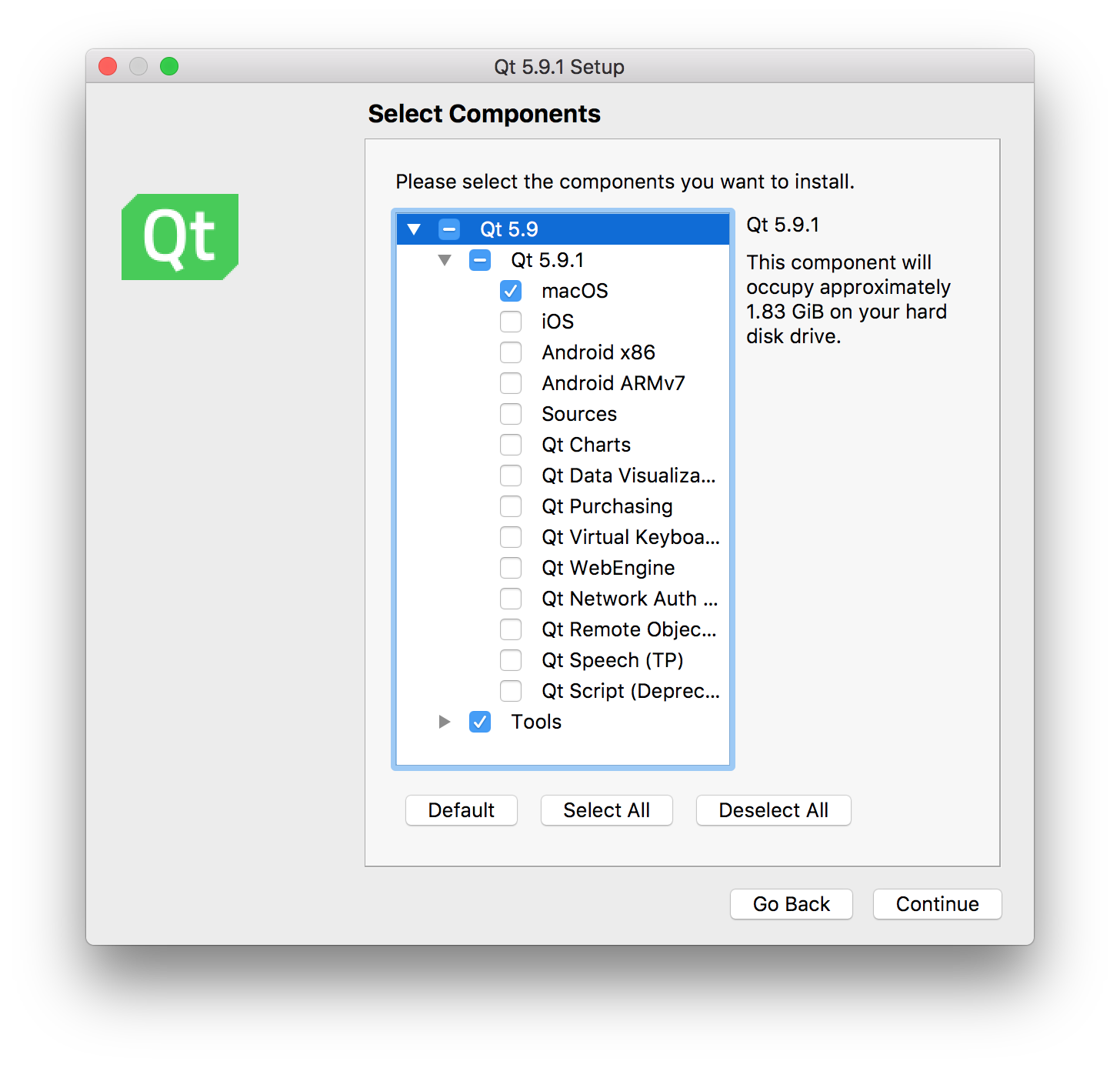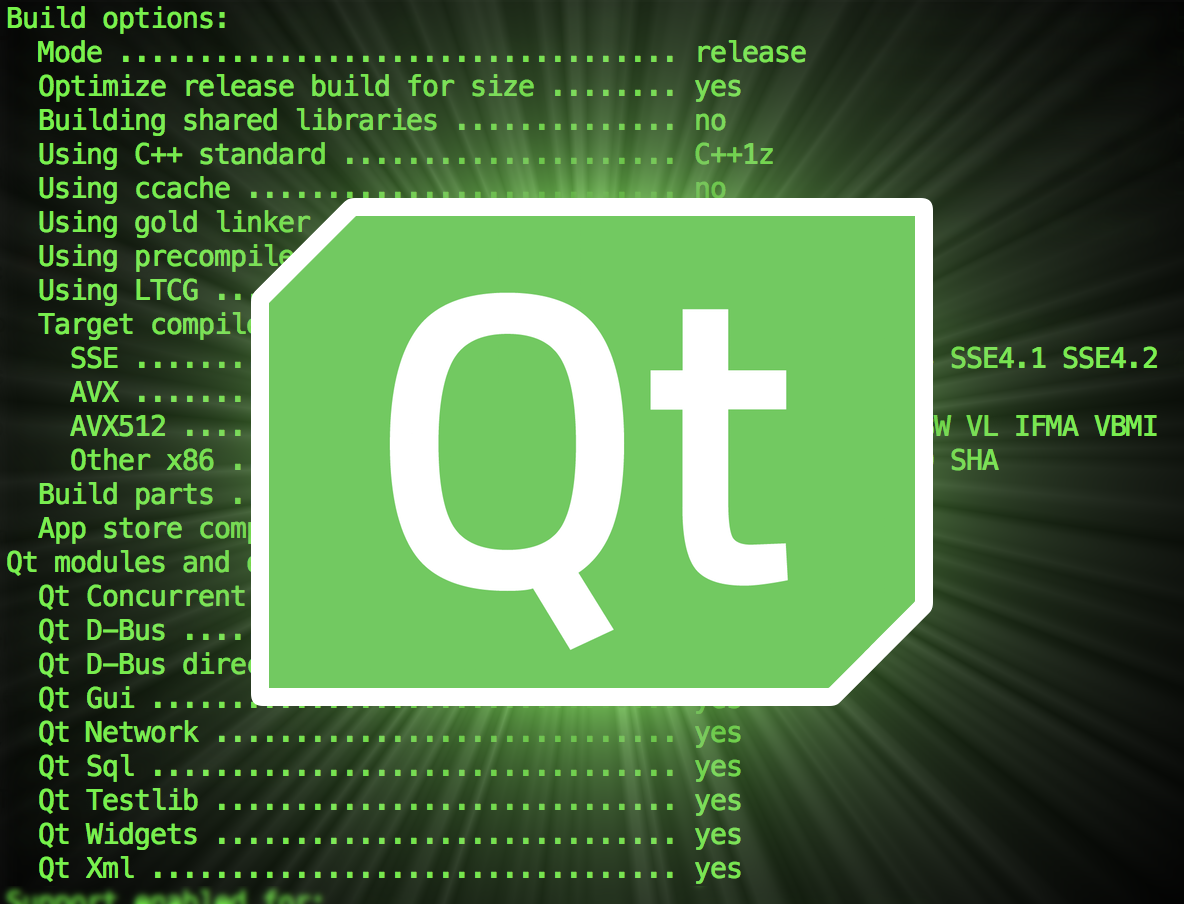When you build your libraries, it could be useful to have one build for one framework and to centralize them: for example, you could having one library for Android, one for Windows and QT5.4 and one for Windows with Qt5.5 without having specific configurations. The easiest way is to put your files in the Qt folders by adding in your.pro file. Qt documentation: Deploying on Mac. Qt offers a deployment tool for Mac: The Mac Deployment Tool. The Mac deployment tool can be found in QTDIR/bin/macdeployqt.It is designed to automate the process of creating a deployable application bundle that contains the Qt libraries as private frameworks.
Qt for macOS has some requirements that are given in more detail in the Qt for macOS Requirements document.
The following instructions describe how to install Qt from the source package. You can download the Qt 5 sources from the Downloads page. For more information, visit the Getting Started with Qt page.
Step 1: Install the License File (Commercially Licensed Qt Only)
If you use Qt with a commercial license, the Qt tools look for a local license file. If you are using a binary installer or the commercial Qt Creator, your licenses are automatically fetched and stored in your local user profile ($HOME/Library/Application Support/Qt/qtlicenses.ini file).
If you do not use any binary installer or Qt Creator, you can download the respective license file from your Qt Account Web portal and save it to your user profile as $HOME/.qt-license. If you prefer a different location or file name, you need to set the QT_LICENSE_FILE environment variable to the respective file path.
Step 2: Unpack the Archive
Unpack the archive if you have not done so already. For example, if you have the qt-everywhere-opensource-src-%VERSION%.tar.gz package, type the following commands at a command line prompt:

This creates the directory /tmp/qt-everywhere-opensource-src-%VERSION% containing the files from the archive.
Step 3: Build the Qt Library
To configure the Qt library for your machine type, run the ./configure script in the package directory.
By default, Qt is configured for installation in the /usr/local/Qt-%VERSION% directory, but this can be changed by using the -prefix option.
By default, Qt is built as a framework, but you can built it as a set of dynamic libraries (dylibs) by specifying the -no-framework option.
Qt can also be configured to be built with debugging symbols. This process is described in detail in the Debugging Techniques document.
The Configure Options page contains more information about the configure options.
To create the library and compile all the examples and tools, type:
If -prefix is outside the build directory, you need to install the library, examples, and tools in the appropriate place. To do this, type:
This command requires that you have administrator access on your machine.
Mac Install Qt
Note: There is a potential race condition when running make install with multiple jobs. It is best to only run one make job (-j1) for the install.
Step 4: Set the Environment Variables
In order to use Qt, some environment variables need to be extended.
This is done like this:
In .profile (if your shell is bash), add the following lines:
Mac Install Qt Designer

Qt For Mac Download

This creates the directory /tmp/qt-everywhere-opensource-src-%VERSION% containing the files from the archive.
Step 3: Build the Qt Library
To configure the Qt library for your machine type, run the ./configure script in the package directory.
By default, Qt is configured for installation in the /usr/local/Qt-%VERSION% directory, but this can be changed by using the -prefix option.
By default, Qt is built as a framework, but you can built it as a set of dynamic libraries (dylibs) by specifying the -no-framework option.
Qt can also be configured to be built with debugging symbols. This process is described in detail in the Debugging Techniques document.
The Configure Options page contains more information about the configure options.
To create the library and compile all the examples and tools, type:
If -prefix is outside the build directory, you need to install the library, examples, and tools in the appropriate place. To do this, type:
This command requires that you have administrator access on your machine.
Mac Install Qt
Note: There is a potential race condition when running make install with multiple jobs. It is best to only run one make job (-j1) for the install.
Step 4: Set the Environment Variables
In order to use Qt, some environment variables need to be extended.
This is done like this:
In .profile (if your shell is bash), add the following lines:
Mac Install Qt Designer
Qt For Mac Download
In .login (in case your shell is csh or tcsh), add the following line:
If you use a different shell, please modify your environment variables accordingly.
That's all. Qt is now installed.
© 2020 The Qt Company Ltd. Documentation contributions included herein are the copyrights of their respective owners. The documentation provided herein is licensed under the terms of the GNU Free Documentation License version 1.3 as published by the Free Software Foundation. Qt and respective logos are trademarks of The Qt Company Ltd. in Finland and/or other countries worldwide. All other trademarks are property of their respective owners.
